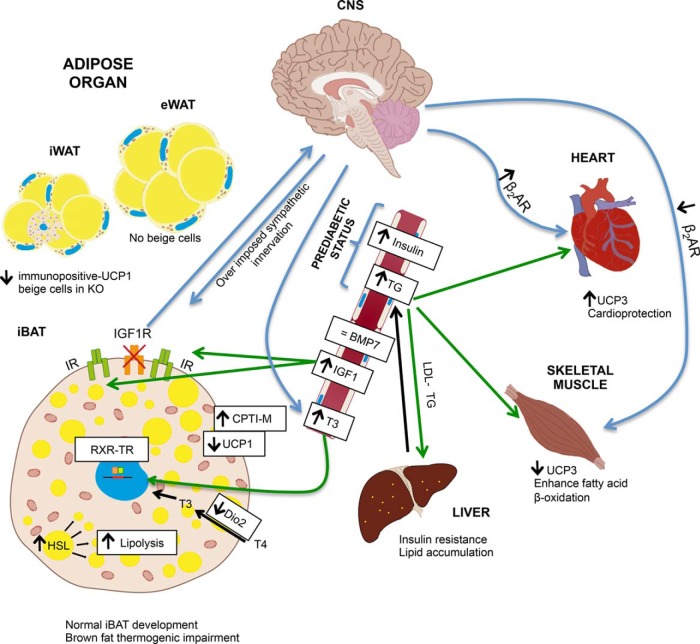Figure 9.
A scheme of the proposed mechanism involved in the major changes of the phenotype in BATIGFIRKO mice. The lack of IGFIR decreased the UCP-1 expression in iBAT and much affect the development of beige cells bearing UCP-1 protein expression mostly in the iWAT depots. As a result, BATIGFIRKO mice showed an impaired nonshivering thermogenesis in response to cold adaptation. In addition, brown fat driven by IGFIR plays an unrecognized role in the redistribution of the adipose organ and lipid mobilization that affect the insulin sensitivity in peripheral tissues as revealed by sustained moderate hyperinsulinemia, hepatic insulin sensitivity being much impaired associated with lipid accumulation, with the outcome of a global insulin resistance. The failure of the thermogenic capacity owing to the lack of IGFIR in the BAT and in the beige cells cannot be compensated by putative T3-enhanced mediated basal metabolic thermogenesis or by skeletal muscle nonshivering thermogenesis, as revealed by the robust loss of UCP-3. However, cardiac muscle emerges as thermogenic tissue owing to the large enhancement of UCP-3, which it confers a cardio protection.

